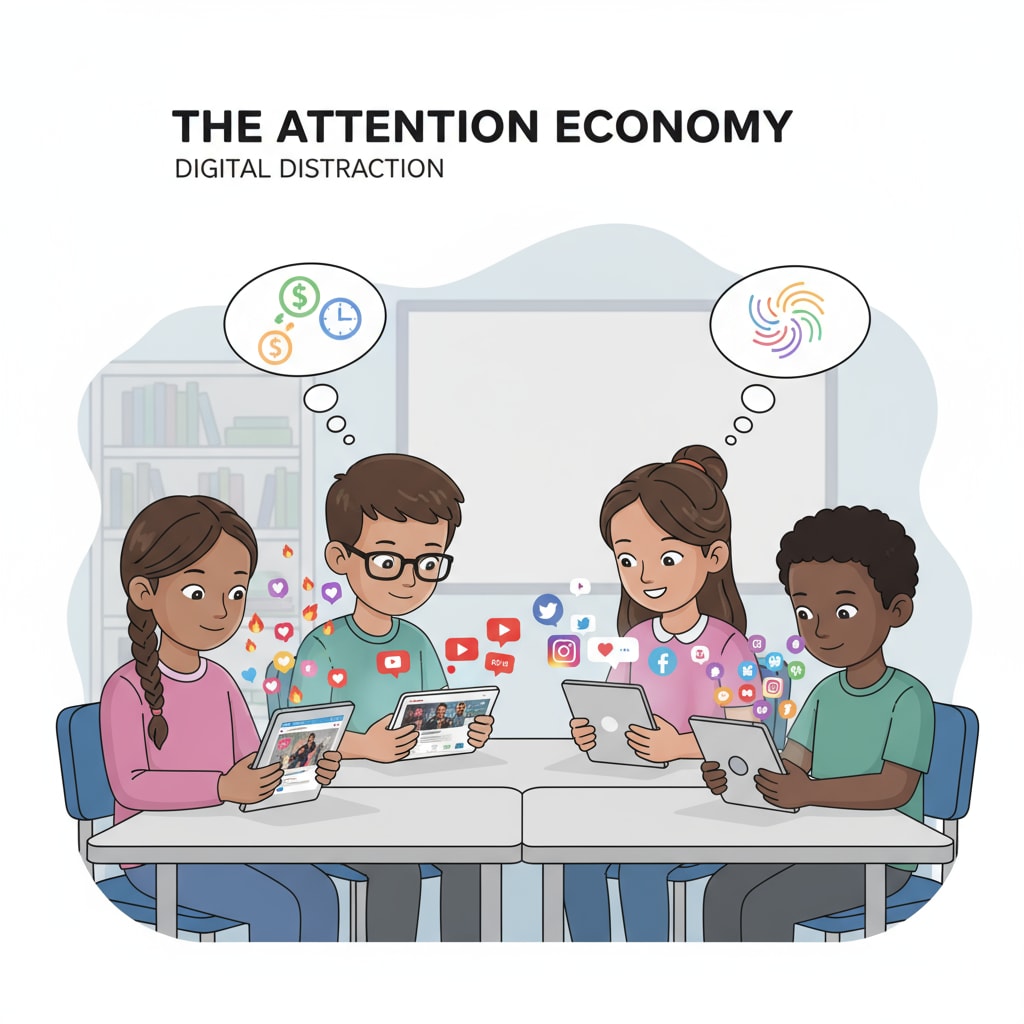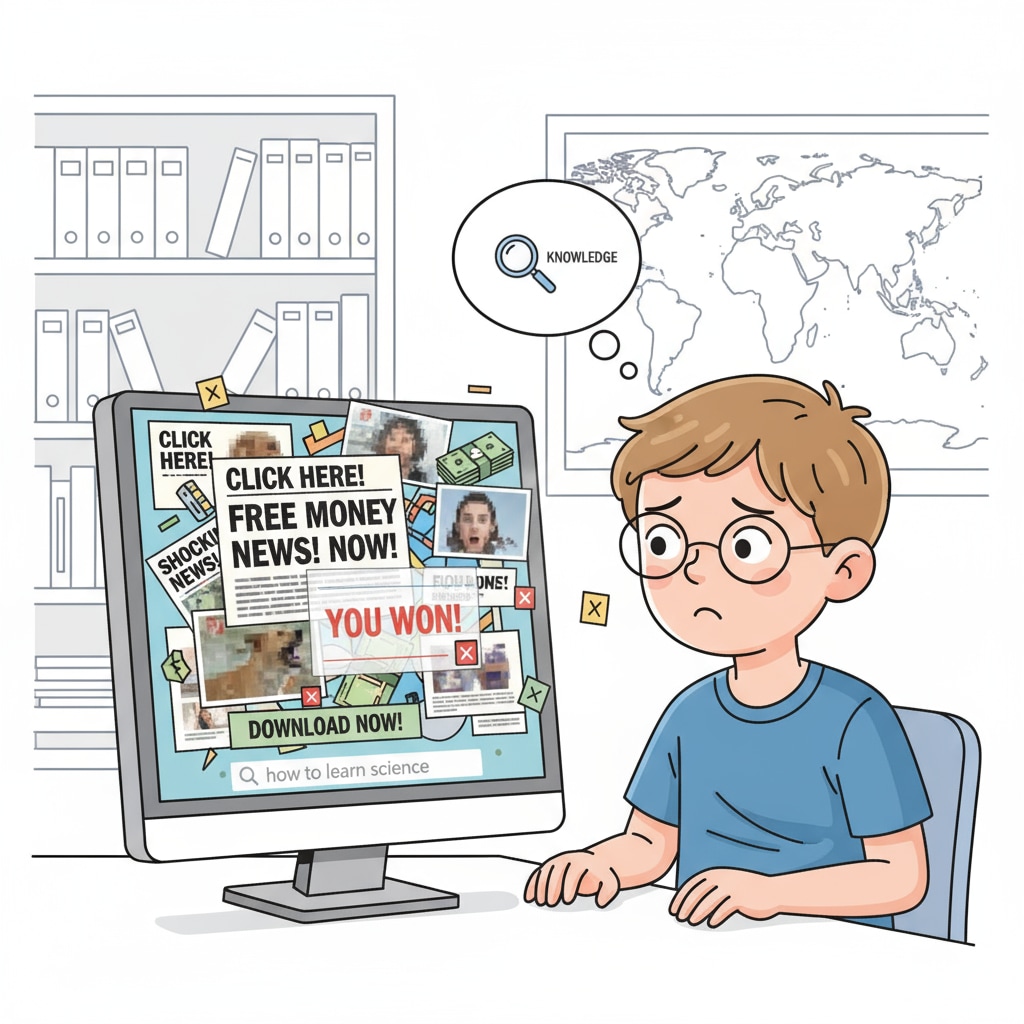In the age of the attention economy, information desert, and technological control, K12 students are at a crossroads. The allure of the digital world, with its endless stream of content, is increasingly manipulating their attention and degrading their cognitive environment. For example, platforms like TikTok and YouTube Kids are designed to capture and hold young minds’ attention, often at the cost of deep thinking and meaningful learning.

The Allure of the Attention Economy
The attention economy thrives on capturing and monetizing people’s attention. Tech companies use sophisticated algorithms to create personalized content feeds that are highly addictive. For K12 students, this means being bombarded with short videos, games, and social media updates that are engineered to keep them engaged. As a result, students may find it difficult to focus on traditional learning tasks. According to Wikipedia’s page on Attention Economy, the competition for attention in the digital space is fierce, and young minds are especially vulnerable.
The Formation of Information Desert
With the overabundance of information, an information desert is emerging. Students are exposed to a vast amount of shallow and often inaccurate information, which crowds out in-depth knowledge. For instance, a simple Google search for a school project may yield thousands of results, but much of it is surface-level content. This lack of quality information can hinder students’ ability to develop a comprehensive understanding of subjects. As Britannica’s entry on Information points out, the quality of information is crucial for cognitive development.

To combat these issues, educators, parents, and policymakers need to work together. Educators can design engaging curricula that incorporate digital tools while also teaching students how to critically evaluate information. Parents should set limits on screen time and encourage offline activities. Policymakers can regulate the digital content available to children. In conclusion, protecting K12 students’ attention and cognitive development in the face of the attention economy, information desert, and technological control requires a collective effort.
Readability guidance: In this article, we’ve used short paragraphs to make the content more digestible. Each H2 section provides key points related to the main topic. The passive语态 has been kept to a minimum, and transition words like “for example” and “as a result” have been used to enhance the flow of the text.


